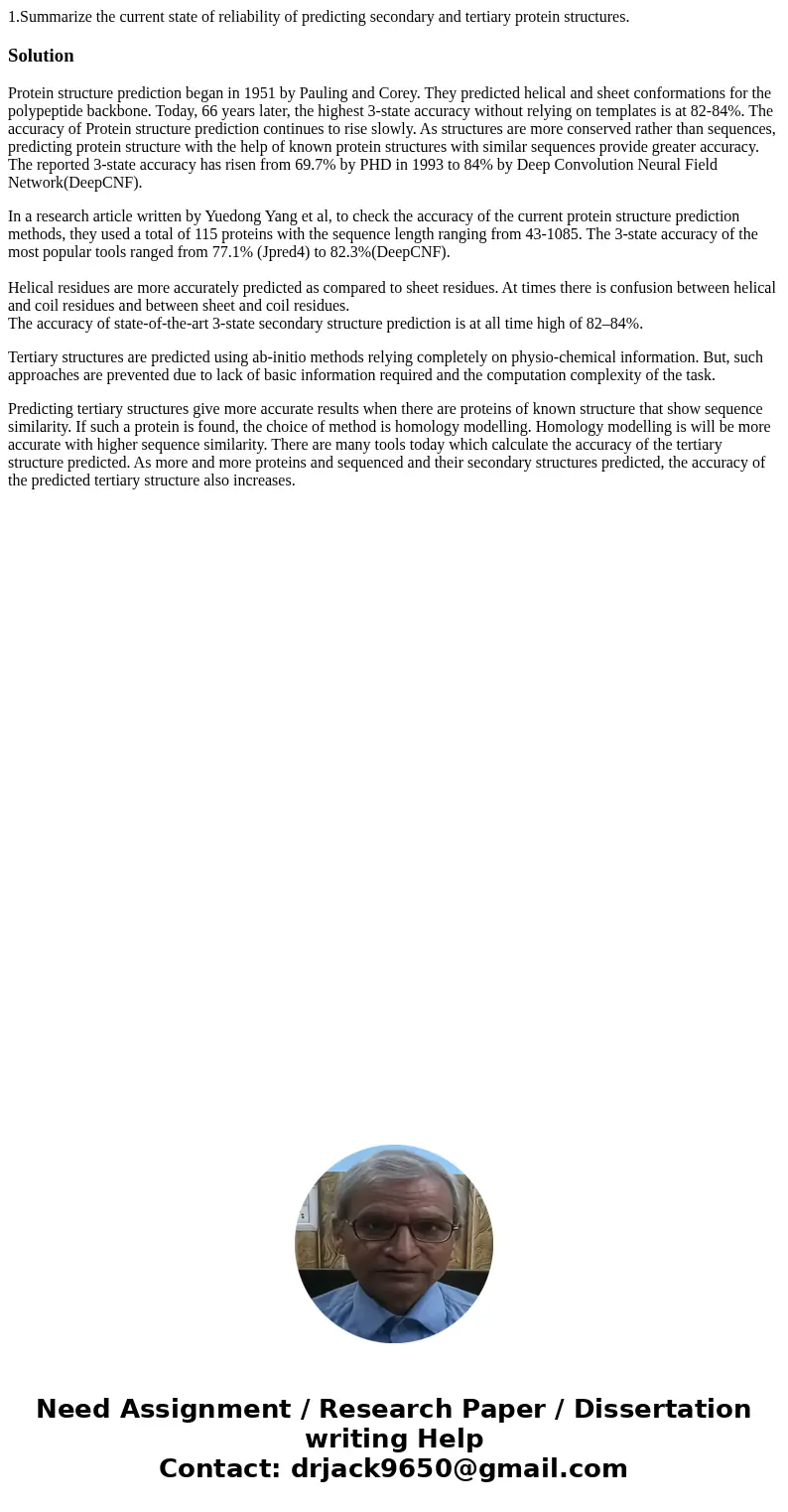1Summarize the current state of reliability of predicting se
1.Summarize the current state of reliability of predicting secondary and tertiary protein structures.
Solution
Protein structure prediction began in 1951 by Pauling and Corey. They predicted helical and sheet conformations for the polypeptide backbone. Today, 66 years later, the highest 3-state accuracy without relying on templates is at 82-84%. The accuracy of Protein structure prediction continues to rise slowly. As structures are more conserved rather than sequences, predicting protein structure with the help of known protein structures with similar sequences provide greater accuracy. The reported 3-state accuracy has risen from 69.7% by PHD in 1993 to 84% by Deep Convolution Neural Field Network(DeepCNF).
In a research article written by Yuedong Yang et al, to check the accuracy of the current protein structure prediction methods, they used a total of 115 proteins with the sequence length ranging from 43-1085. The 3-state accuracy of the most popular tools ranged from 77.1% (Jpred4) to 82.3%(DeepCNF).
Helical residues are more accurately predicted as compared to sheet residues. At times there is confusion between helical and coil residues and between sheet and coil residues.
The accuracy of state-of-the-art 3-state secondary structure prediction is at all time high of 82–84%.
Tertiary structures are predicted using ab-initio methods relying completely on physio-chemical information. But, such approaches are prevented due to lack of basic information required and the computation complexity of the task.
Predicting tertiary structures give more accurate results when there are proteins of known structure that show sequence similarity. If such a protein is found, the choice of method is homology modelling. Homology modelling is will be more accurate with higher sequence similarity. There are many tools today which calculate the accuracy of the tertiary structure predicted. As more and more proteins and sequenced and their secondary structures predicted, the accuracy of the predicted tertiary structure also increases.

 Homework Sourse
Homework Sourse